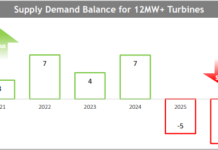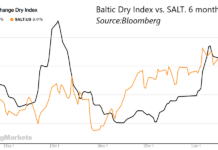John Petersen
Earlier this month I wrote a pair of articles (here and here) that questioned the reasonableness of the near universal assumption that the wind is always blowing somewhere and wind power infrastructure with a wide enough geographic dispersion would offer a relatively stable power output. I presented graphs from the Bonneville Power Administration and a study by the John Muir Trust that raised substantial doubt in my mind. The articles drew a well-reasoned response from my colleague Tom Konrad (here).
While many commenters understood the point I was trying to make, many others argued that the sample areas were too small or they didn’t fairly test the geographic dispersion theory. Since I hate unresolved questions, I went looking for a better answer and found it in historical wind power production data from five power authorities:
- The Bonneville Power Administration, which serves 3.5 GW of installed capacity in the Pacific Northwest;
- The Australian Energy Market Operator, which serves 1.8 GW of installed capacity in New South Wales;
- The Independent Electricity System Operator, which serves 1.2 GW of installed capacity in Ontario;
- The Alberta Electric System Operator, which serves 0.8 GW of installed capacity in Alberta; and
- The EirGrid, which serves 1.4 GW of installed capacity in Ireland;
Most people would agree that a sample of five major systems spread over 17 timezones and two hemispheres has enough geographic diversity to provide a reliable basis for analysis. To simplify the process I took the following steps:
- I downloaded detailed production data from each power authority for the months of January and July 2010 and then calculated an average wind power output for each six hour interval;
- I then calculated a maximum and an average power output for each system during January and July 2010;
- I used the average power output of the systems to calculate a conversion factor that would bring all five systems up to the average power output of the BPA;
- To compensate for time zone differences I shifted Australia by three intervals (6 hours each) the BPA by two intervals and Alberta and Ontario by one interval; and
- I constructed a stacked graph to show what the combined power output of the five systems would be if they were each built-up to the point where their effective production capacity was equivalent to the BPA.
While the model is not a perfect representation with spot on accuracy, it’s certainly close enough to provide a reasonable representation for the purpose of testing the geographic dispersion theory. When all the calculations and adjustments were done, my model wind supergrid produced the following combined output for the month of January 2011.

It produced the following combined output for the month of July 2011.
 FAN), the PowerShares Global Wind Energy Portfolio ETF (PWND) and a host of publicly traded wind power stocks should be avoided.
FAN), the PowerShares Global Wind Energy Portfolio ETF (PWND) and a host of publicly traded wind power stocks should be avoided.
Disclosure: None.







